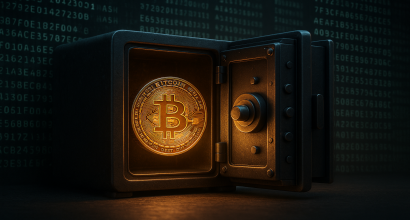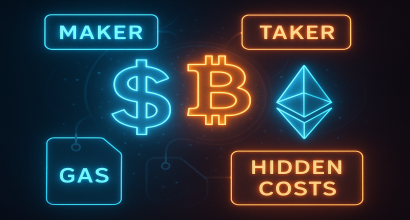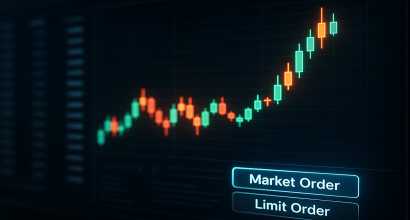Crypto Exchange 101: From Sign-Up to First Trade
Introduction
Crypto exchanges are your bridge between traditional money and digital assets. This guide walks you through the full journey—how platforms work, how to open and secure your account, and how to execute your first trade without common beginner mistakes.
What a Crypto Exchange Actually Does
- On/Off-ramp: Convert fiat (e.g., USD/EUR) to crypto and back.
- Matching engine: Matches buy and sell orders in milliseconds.
- Custody (CEXs): Holds user funds; DEXs rely on smart contracts.
- Market data: Order books, price charts, depth, and trade history.
Account Creation & KYC: Why It Matters
- Register: Use a unique email (preferably with aliasing) and a strong password.
- KYC: Verify identity to unlock deposits/withdrawals and higher limits.
- Security: Enable 2FA (authenticator app), set anti-phishing codes, and create a withdrawal whitelist.
Tip: Don’t reuse passwords. Use a password manager and back up authenticator codes safely (offline).
Funding Your Account
- Fiat deposit: Bank transfer or card (usually higher fees for cards).
- Crypto deposit: Send from your own wallet—double-check network (e.g., ETH vs. BSC) and memo/tag for some assets (e.g., XRP).
- Stablecoins: Many beginners start with USDT/USDC to avoid volatility while learning.
Reading the Order Book (Quick Demo)
Imagine BTC/USDT:
- Best ask (sell): 30,010 (people willing to sell)
- Best bid (buy): 30,000 (people willing to buy)
- Spread: 10 USDT. Tighter spread = higher liquidity.
Order Types You’ll Use First
- Market Order: Fills immediately at the best available price. Simple, but can suffer slippage in thin markets.
- Limit Order: You choose the price. Great for control; may not fill instantly.
- Stop-Limit: Risk control: e.g., trigger sell if price falls to 29,500 to limit losses.
Your First Trade (Step-by-Step)
- Choose pair: e.g., BTC/USDT.
- Analyze liquidity: Check spread and 24h volume.
- Decide order type: Limit for control; market for immediacy.
- Place order: Enter size and price (for limit).
- Confirm fills: Review average fill price and fees.
- Secure funds: For longer holds, withdraw to your own wallet.
Fees, Slippage & Hidden Costs
- Maker vs. taker fees: Limit orders that add liquidity often pay less.
- Funding rates: On derivatives; not for spot.
- Network fees: Charged when withdrawing on-chain.
- Currency conversion: Depositing in one currency and trading in another may add FX costs.
Withdrawing Safely
- Whitelist addresses and lock withdrawals for 24 hours after changing security settings.
- Prefer hardware wallets for long-term storage.
Common Beginner Mistakes
- Sending to the wrong network or without a required memo.
- Trading large sizes with a market order in low liquidity pairs.
- Leaving all funds on an exchange indefinitely.
Key Takeaways
- Exchanges are marketplaces—learn the order book and fees.
- Security first: 2FA, withdrawal whitelists, hardware wallets.
- Use limit orders to avoid slippage; verify networks before transfers.
FAQs
- Do I need KYC to trade?
- Some platforms allow limited usage without KYC, but KYC is typically required for full functionality and higher limits.
- Is a hardware wallet necessary?
- Not mandatory, but highly recommended for long-term holdings.
- Can I lose money with a market order?
- You can pay a worse average price due to slippage, especially in thin markets.
- What’s a stablecoin used for?
- To park value in a stable asset (pegged to USD/EUR) while avoiding volatility between trades.



















Discussion & Comments